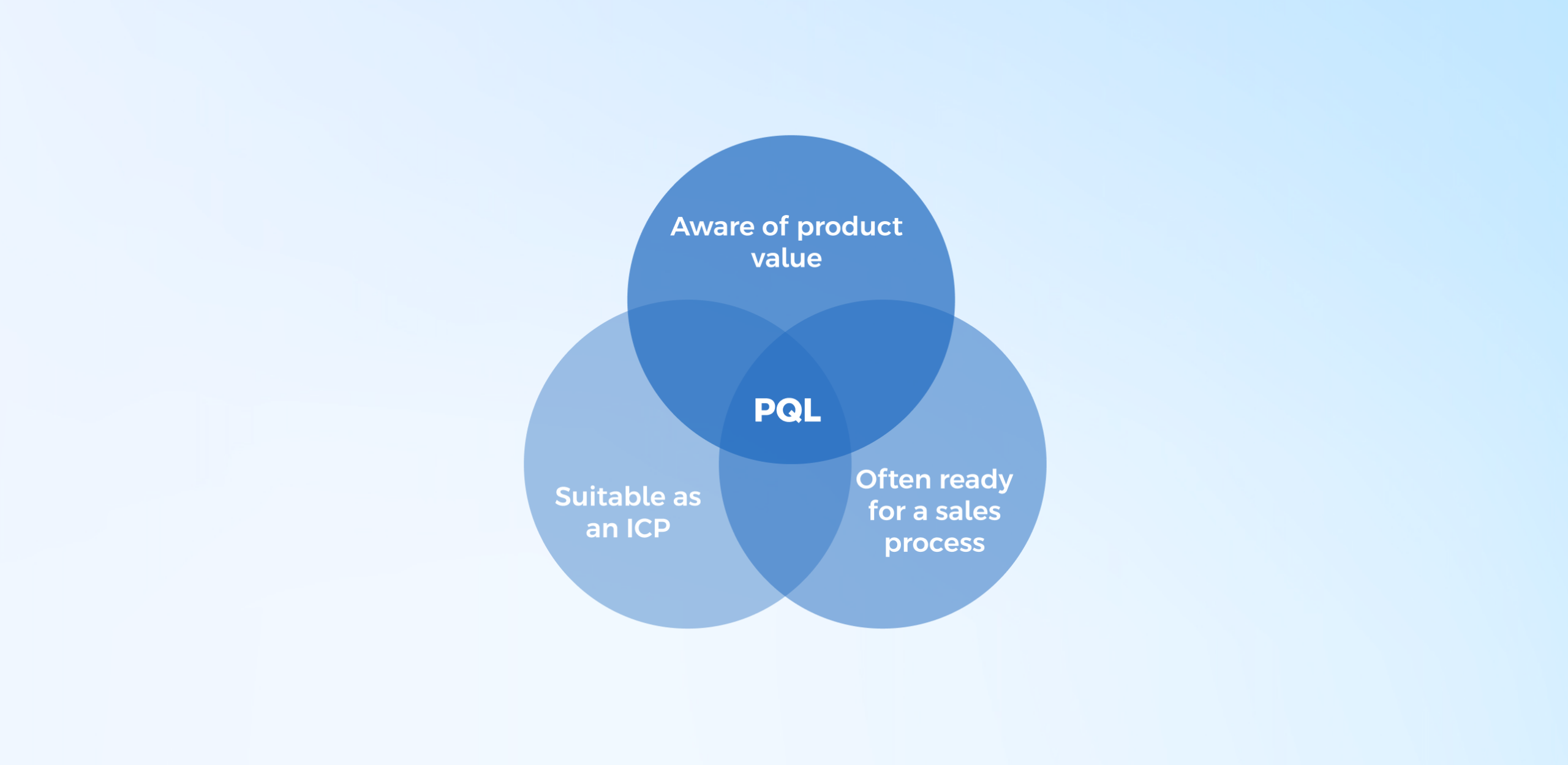The term product-qualified lead (PQL), might sound like just another marketing jargon, but it holds significant value in the sales funnel. If you’ve ever wondered how some big SaaS companies (Slack, HubSpot, and more…) converting users, the secret might just lie in their understanding of product-qualified leads.
What is a product qualified lead (PQL)?
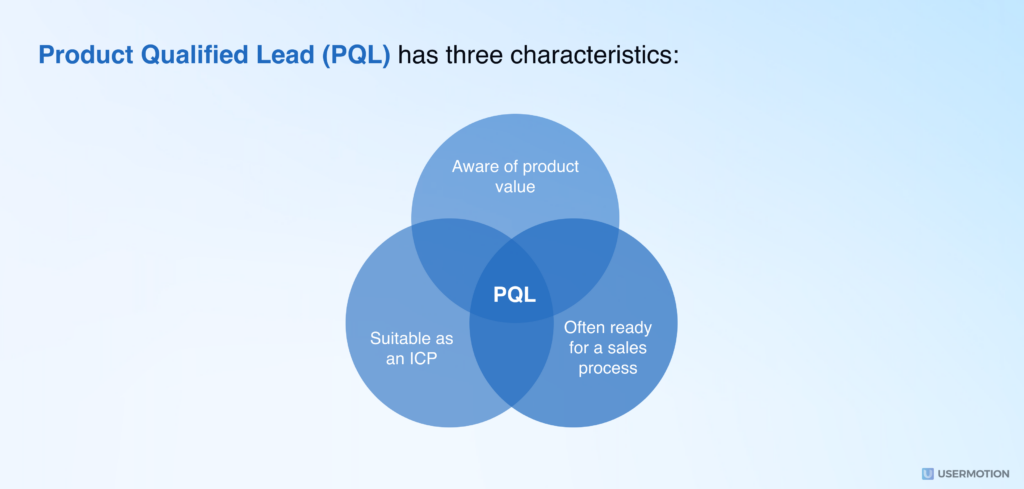
Product qualified lead (PQL), is a lead type that show buying signals through engaging directly with the product and the service itself. A product qualified has experienced meaningful value from a product, usually through a free trial or freemium model, making them more likely to convert into paying customers.
Unlike marketing qualified leads (MQLs), which are based on general engagement metrics like email opens or downloads, PQLs are based on specific product usage behaviors that indicate a higher likelihood of conversion.
PQLs typically exist in the middle to lower end of the sales funnel. They are past the initial awareness phase and are now in the consideration and decision phases, as they have experienced your product at firsthand. This means, that when you pitch to a PQL, you’re not trying to introduce them to the value of your product – they already get it.
It usually comes with the free trials or freemium pricing models, but PQLs represent a deeper engagement, often marked by:
- Alignment with the Ideal Customer Profile (ICP)
- Significant user engagement
- Strong indicators of purchase intent
What is a product qualified not?
The idea that simply signing up for a free trial or upgrading a free plan qualifies someone as a PQL is wrong. Instead, a PQL should be identified based on actions that indicate the user has found value in the product.
- It is not every lead sign up for a free trial
- It is not a marketing qualified lead
- It is not a lead visits your website pages
Product qualified lead (PQL) vs marketing qualified leads (MQL)
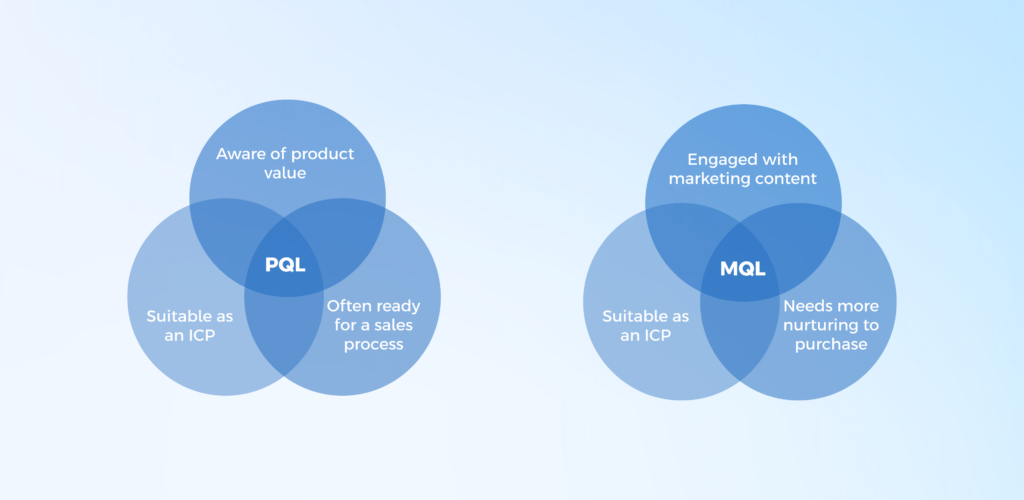
The distinction is somewhat straightforward. While MQLs might have had tangential interactions with your product – subscribing to newsletters, downloading resources, etc. – PQLs have deeper, more intimate experiences. This typically translates to an actual product usage experience, which is inherently more valuable than an MQL’s surface-level engagement.
Product qualified lead (PQL) vs sales qualified leads (SQL)
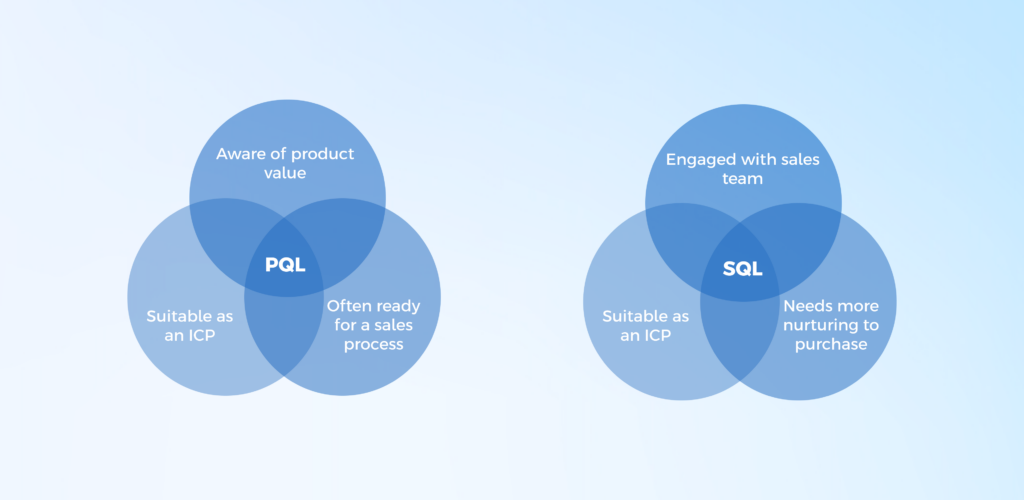
While both product qualified leads and sales qualified leads are leads that have shown interest in your product or service, PQLs have demonstrated this through their interaction with the product, while SQLs have been identified as ready for a sales approach based on a set of qualifying criteria.
Why are product-qualified leads important?
Why should you care about PQLs? Why is it important to focus on them? These are valid questions, and the answers lie in the unique nature of PQLs and the pivotal role they play in the sales process.
- Shorter sales cycles: The sales cycle of PQLs can be faster than other types of leads because they have already demonstrated a strong interest in and fit for the product..
- Higher conversion rates: Unlike other types of leads, PQLs have already demonstrated a clear interest in your product by actively using it. Their interaction with your product indicates that they find value in what you’re offering, making them highly likely to convert into a paying customer.
- Lower customer acquisition cost: PQLs have already interacted with the product, usually through a free trial or freemium model, and found value in it, they are more likely to convert into paying customers.
- Increased customer satisfaction: PQLs give businesses information that can help them keep customers and increase their lifetime value.
How to identify product qualified leads?
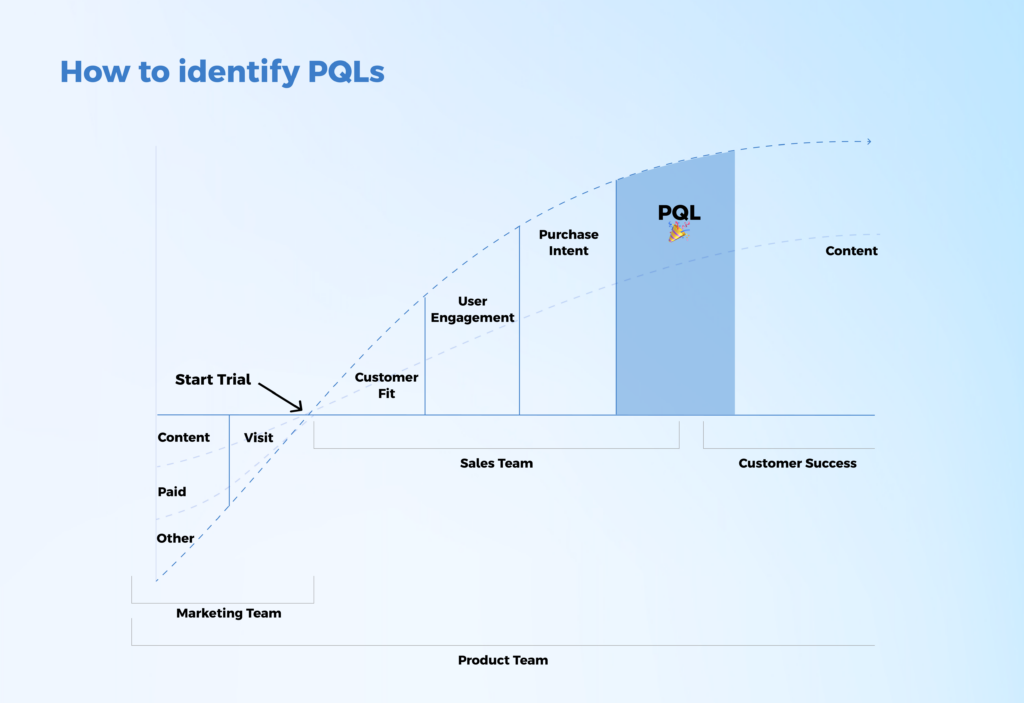
Defining a PQL for your business can be challenging because it requires a deep understanding of your product’s value metrics and the behaviors that correlate with conversion.
- Product usage intent
- Number of active users
- Usage patterns
- Features used
It’s essential to identify value metrics that align with your customers’ needs and grow with them. This helps in accurately defining what a PQL looks like for your business.
1. Define usage pattern and events
Start with simple usage patterns if you’re just beginning, and refine your PQL definition as you gather more data. These are specific events that users take within your product that indicate they have found value in it and are likely to become paying customers.
Usually these key events are also used in your product on boarding. So if you already have a product onboarding section in your product, you just basically use that steps as a product activation events.
2. Track the user engagement process
This includes every interaction that users have with your product, not just the key events. By monitoring all user engagement events, you can gain a comprehensive understanding of how users are interacting with your product, and behavioral data which aids in identifying potential PQLs.
Some of important user engagement events could be;
- Introducing teammates in the account
- Scheduling a product demo
- Implementing integration
- Reading documentation
- Talking to support
3. Assign a score to each event
This process, known as lead scoring, assists in prioritizing leads that are most likely to convert into customers. As importance of the events are not the equal for all events, it’s important to give a score from the most important to the least imporatant events. The scores can be based on the nature of the event, frequency of occurrence, and other relevant factors.
For example; inviting a teammate in the product would have a more importance than just visiting a documentation page.
How to manage product qualified leads?
Understanding how to identify PQLs is only half the battle. The other half is managing these leads’ journey.
1. Transition from tracking to action
While identifying and tracking PQLs is essential, the heart lies in your subsequent actions. Many product teams fall short here. It’s not merely about tracking; it’s about strategically ushering these leads toward a purchase decision. Though it’s a digital journey, at its core, it’s about human-to-human connection. Always ensure your communication feels personalized.
According to a study by Accenture, 91% of consumers are more likely to purchase from brands that recognize, remember, and provide relevant offers and recommendations.
Accenture
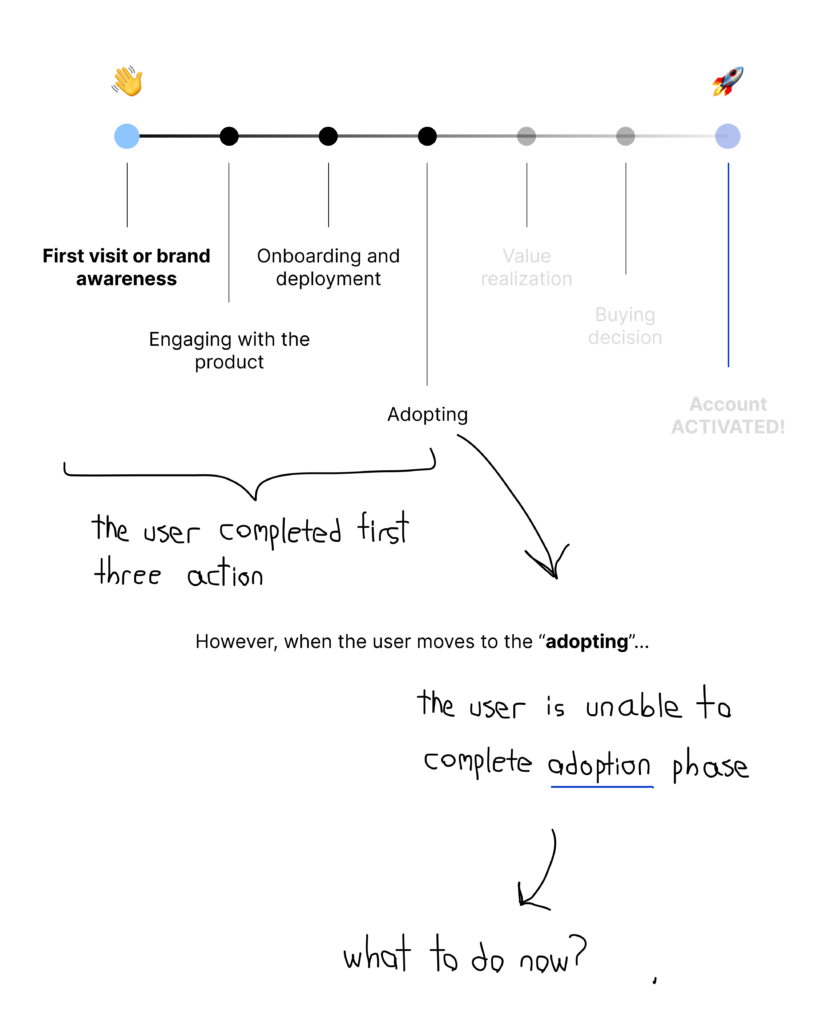
A user starts the journey and completes the first three steps;
- Engagement: The user signs up for the product, watches the introductory video on product features, sets up her user profile, and integrates their email accounts.
- Onboarding: The user starts to explore the features further by setting up a few deals and opportunities, playing around with the dashboard, and even inviting a couple of team members to collaborate.
- Deployment: As her team members start to use the product, the user sets up the main service of the product.
However, when the user moves to;
- Adoption: The user finds it challenging to integrate the tool.
What to do now?
- Ask “Why?”: Directly ask the user if there is any problem because you realize that the user is not going further down in the funnel.
- Detection: You can use tools to detect frequent failures in action.
- Personalized Outreach: Now it’s the moment to reach out to users personally to address and solve their challenges.
- Valuable Content: It’s beneficial to share materials that can help them in overcoming their adoption obstacles.
- Offering Incentives: To make her transition smoother, you can offer the user an extended free trial period and direct access to a technical specialist for a month, ensuring her team can make the most of the platform without hurdles.
Remember, while data drives our decisions, it’s the relationships and value we provide that ultimately influence outcomes. The journey from tracking to taking action should be seamless, personalized, and always grounded in delivering value.
2. Data-driven decision making
There are often patterns in these behaviors that signify a deeper product engagement. For instance, it’s not uncommon to find that a user engaging with certain advanced features or spending an extended amount of time on tutorials demonstrates a more pronounced intent to commit and convert.
A study by McKinsey found that companies that make data-driven decisions are 23 times more likely to acquire customers, 6 times as likely to retain those customers, and 19 times as likely to be profitable as a result.
McKinsey
It’s not just about distinguishing these patterns but also about reacting to them in real-time. A user who consistently demonstrates high levels of product engagement could be encouraged gently towards a premium offering, using personalized communication.
3. Adjust your criteria
Businesses need to define and improve their product qualified lead (PQL) criteria, just like marketers have had to make their campaigns and strategies more flexible. Users change the way they act. New industry standards are made. Technology changes. The competition gets tougher. In this kind of situation, static definitions of PQLs could become out of date.
Peter Drucker, a management consultant once said, “What gets measured gets better.” But it’s also true that we need to look at how we measure every so often. Using old metrics or criteria is like using an old map to get around: it won’t show you new roads or obstacles.
So, the criteria for PQLs need to be dynamic, keeping pace with the changing tides of user behavior, technology, and market demands. By regularly reassessing and recalibrating, businesses not only stay relevant but also ensure they’re always engaging with the most promising leads.
4. Monitor your product-qualified lead strategy
In order to effectively manage leads for the product, you must constantly control the process and be ready to make changes in light of the data. The criteria you set for your potential users may change over time because current conditions may change, or you may have made a mistake in the past.
This could mean making changes to the system for generating leads, improving the criteria for users, or changing the way leads are generated. By controlling the steps, and making changes as needed, SaaS companies can effectively target the right leads, bringing their conversion rates to great levels.
5. Implementation across teams
Implementing PQLs successfully requires collaboration across marketing, sales, product, customer success, and engineering teams. Each team needs to be aligned on the metrics that drive PQLs.
The process of identifying and nurturing PQLs isn’t limited to one department; it requires coordinated efforts across different teams within the organization to ensure that users are experiencing value and are likely to convert.
Automatically identify and manage product qualified leads with UserMotion
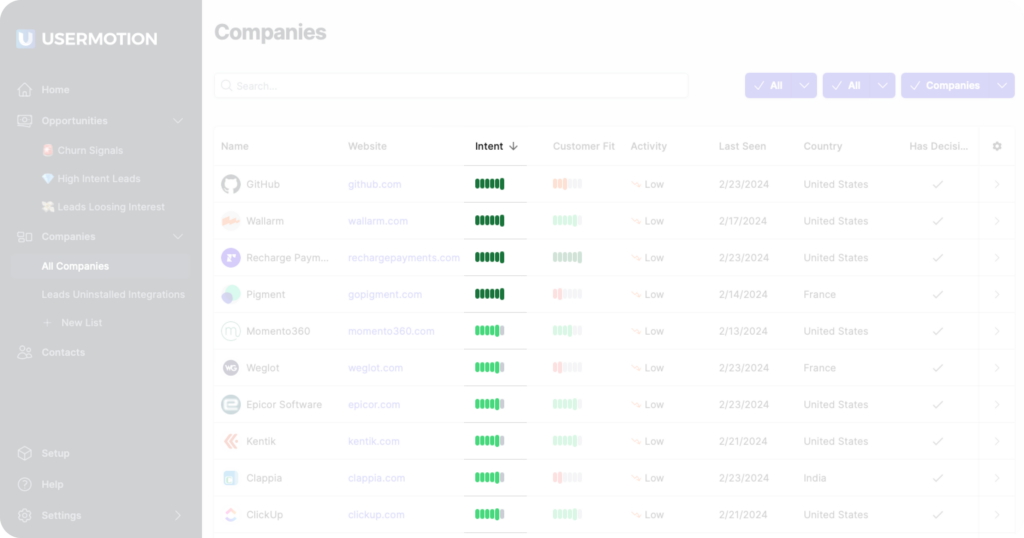
Identifying and managing product qualified leads can be a complex process, especially as your user base grows and your product evolves. That’s where UserMotion comes in—a tool designed to automate the identification and management of PQLs, ensuring that your sales and marketing efforts are focused on the users most likely to convert.
- Connect UserMotion with your existing CRM tools to sync your user database in real-time. It also integrates smoothly with CRMs like Intercom and HubSpot, ensuring that your sales and marketing teams are always in sync.
- UserMotion evaluates all your users in terms in their alignment with your ideal customer profile.
- It tracks user behaviors and assign scores to each behavior and user by giving intent scores.
- It categorizes your users into actionable segments, such as high-potential leads, new users, or those needing additional support, allowing your team to target the right audience at the right time.
Conclusion
Companies can learn a lot about their customer’s behavior and need by looking at how they use their products. This lets them make more targeted and effective marketing campaigns. This is why it’s important for businesses to track and analyze product-qualified leads if they want to improve their sales funnel and grow in today’s highly competitive market.

